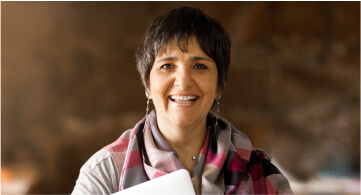Activity Learning Outcomes
Through this discussion, the student will demonstrate the ability to:
1. Compares and contrasts the pathophysiology between Alzheimer’s disease and frontotemporal dementia. (CO1)
2. Identifies the clinical findings from the case that supports a diagnosis of Alzheimer’s disease. (CO3)
3. Explain one hypothesis that explains the development of Alzheimer’s disease (CO3)
4. Discuss the patient’s likely stage of Alzheimer’s disease (CO4)
Preparing the Assignment
Requirements
1. Read the case study below.
2. In your initial discussion post, answer the questions related to the case scenario and support your response with at least one evidence-based reference
Case Scenario
A 76-year -old man is brought to the primary care office by his wife with concerns about his worsening memory. He is a retired lawyer who has recently been getting lost in the neighborhood where he has lived for 35 years. He was recently found wandering and has often been brought home by neighbors. When asked about this, he becomes angry and defensive and states that he was just trying to go to the store and get some bread.
His wife expressed concerns about his ability to make decisions as she came home two days ago to find that he allowed an unknown individual into the home to convince him to buy a home security system which they already have. He has also had trouble dressing himself and balancing his checkbook. At this point, she is considering hiring a day-time caregiver help him with dressing, meals and general supervision why she is at work.
Past Medical History: Gastroesophageal reflux (treated with diet); is negative for hypertension, hyperlipidemia, stroke or head injury or depression
Allergies: No known allergies
Medications: None
Family History
· Father deceased at age 78 of decline related to Alzheimer’s disease
· Mother deceased at age 80 of natural causes
· No siblings
Social History
· Denies smoking
· Denies alcohol or recreational drug use
· Retired lawyer
· Hobby: Golf at least twice a week
Review of Systems
· Constitutional: Denies fatigue or insomnia
· HEENT: Denies nasal congestion, rhinorrhea or sore throat.
· Chest: Denies dyspnea or coughing
· Heart: Denies chest pain, chest pressure or palpitations.
· Lymph: Denies lymph node swelling.
· Musculoskeletal: denies falls or loss of balance; denies joint point or swelling
General Physical Exam
· Constitutional: Alert, angry but cooperative
· Vital Signs: BP-128/72, T-98.6 F, P-76, RR-20
· Wt. 178 lbs., Ht. 6’0″, BMI 24.1
HEENT
· Head normocephalic; Pupils equal and reactive to light bilaterally; EOM’s intact
Neck/Lymph Nodes
· No abnormalities noted
Lungs
· Bilateral breath sounds clear throughout lung fields.
Heart
· S1 and S2 regular rate and rhythm, no rubs or murmurs.
Integumentary System
· Warm, dry and intact. Nail beds pink without clubbing.
Neurological
· Deep tendon reflexes (DTRs): 2/2; muscle tone and strength 5/5; no gait abnormalities; sensation intact bilaterally; no aphasia
Diagnostics
· Mini-Mental State Examination (MMSE): Baseline score 12 out of 30 (moderate dementia)
· MRI: hippocampal atrophy
· Based on the clinical presentation and diagnostic findings, the patient is diagnosed with Alzheimer’s type dementia.
Discussion Questions
1. Compare and contrast the pathophysiology between Alzheimer’s disease and frontotemporal dementia.
2. Identify the clinical findings from the case that supports a diagnosis of Alzheimer’s disease.
3. Explain one hypothesis that explains the development of Alzheimer’s disease
4. Discuss the patient’s likely stage of Alzheimer’s disease.
|
DISCUSSION CONTENT |
|||
|
Category |
Points |
% |
Description |
|
Application of Course Knowledge |
30 |
30% |
The student: 1. Compares and contrasts the pathophysiology betweenAlzheimer’s disease and frontotemporal dementia. 2. Identifies the clinical findings from the case that supports a diagnosis of Alzheimer’s disease. 3. Explains one hypothesis that explains the development of Alzheimer’s disease. 4. Discusses the patient’s likely stage of Alzheimer’s disease. |
|
Support from Evidence-Based Practice |
30 |
30% |
1. Initial discussion post is supported with appropriate, scholarly sources; AND 2. Sources are published within the last 5 years (unless it is the most current CPG); AND 3. Reference list is provided and in-text citations match; AND 4. All answers are fully supported with an appropriate EBM argument |
|
Interactive Dialogue |
30 |
30% |
In addition to providing a response to the initial post due by Wednesday, 11:59 p.m. MT, student provides a minimum of two responses weekly on separate days; e.g., replies to a post from a peer; AND faculty member’s question; OR two peers if no faculty question. A response to faculty could include a question posed to a student or the entire class or a faculty question directed towards another student. AND · Evidence from appropriate scholarly sources are included; AND · Reference list is provided and in-text citations match |
|
· |
90 |
90% |
Total CONTENT Points = 90 pts |
|
|
|||
|
DISCUSSION FORMAT |
|||
|
Category |
Points |
% |
Description |
|
Organization |
5 |
5% |
1. Case study responses are presented in a logical format; AND 2. Responses are in sequence with the numbered questions; AND 3. The case study response is understandable and easy to follow; AND 4. All responses are relevant to the case topic |
|
Format |
5 |
5% |
· Discussion post has minimal grammar, syntax, spelling, punctuation, or APA format errors* (*) APA style references and in text citations are required; however, there are no deductions for errors in indentation or spacing of references. All elements of the reference otherwise must be included. |
|
10 |
10% |
Total FORMAT Points = 10pts |
|







